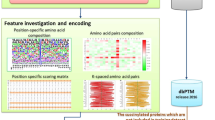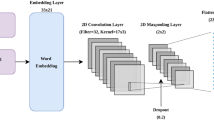Abstract
S-succinylation of proteins is a significant and common post-translational modification (PTM) that takes place on Cysteine. And in many biological processes, PTM plays an important role, which is also closely related to many diseases in humans. Hence, identifying the s-succinylation sites of Cysteine is very pivotal in biology and disease research. However, traditional experimental methods are expensive and time-consuming, so ML methods have been proposed by some researchers to deal with the problem of PTM recognition. In particular, the deep learning method is also applied to this field. We put forward a convolutional neural network to identify the hidden sites of s-succinylation in our work. In addition, we utilized the datasets of human and mouse, and we aim to predict the s-succ sites existing in humans, and verify them by loo verification method. More specifically, five metrics are utilized to assess the prediction performance of classifier. In general, CNN model that we proposed achieves better prediction performance.
Access this chapter
Tax calculation will be finalised at checkout
Purchases are for personal use only
Similar content being viewed by others
References
Modification, P.T., Protein, F., Contents, P., et al.: Overview of post-translational modifications (PTMs) (2015)
Zhang, Z., Tan, M., Xie, Z., et al.: Identification of lysine succinylation as a new post-translational modification. Nat. Chem. Biol. 7(1), 58–63 (2011)
Park, J., Yue, C., Tishkoff, D.X., et al.: SIRT5-mediated lysine desuccinylation impacts diverse metabolic pathways. Mol. Cell 50(6), 919 (2013)
Weinert, B., et al.: Lysine Succinylation is a frequently occurring modification in prokaryotes and eukaryotes and extensively overlaps with acetylation. Cell Rep. 4(4), 842–851 (2013)
Xie, Z., et al.: Lysine Succinylation and lysine Malonylation in histones. Mol. Cell Proteom. Mcp. 11(5), 100–107 (2012)
Papanicolaou, K.N., O’Rourke, B., Foster, D.B.: Metabolism leaves its mark on the powerhouse: recent progress in post-translational modifications of lysine in mitochondria. Front Physiol. 5(5), 301 (2013)
Kim, H.J., Ha, S., Lee, H.Y., Lee, K.J.: Mass Spectrom. Rev. 34(2), 184–208 (2015)
Pace, N.J., Weerapana, E.: ACS Chem. Biol. 8(2), 283–296 (2013)
Jia, J., Liu, Z., Xiao, X., Liu, B.: pSuc-Lys: predict lysine succinylation sites in proteins with PseAAC and ensemble random forest approach. J. Theor. Biol. 394, 223–230 (2016)
Chou, K.C.: Impacts of bioinformatics to medicinal chemistry. Med Chem. 11, 218–234 (2015)
Jia, J., Liu, Z., Xiao, X.: iSuc-PseOpt: identifying lysine succinylation sites in proteins by incorporating sequence-coupling effects into pseudo components and optimizing imbalanced training dataset. Anal. Biochem. 497, 48–56 (2016)
Xu, Y.: Recent progress in predicting posttranslational modification sites in proteins. Curr. Top. Med. Chem. 16, 591–603 (2016)
Author information
Authors and Affiliations
Corresponding author
Editor information
Editors and Affiliations
Rights and permissions
Copyright information
© 2022 The Author(s), under exclusive license to Springer Nature Switzerland AG
About this paper
Cite this paper
Meng, T., Chen, Y., Chen, B., Cao, Y., Chen, J., Cong, H. (2022). Classification of S-succinylation Sites of Cysteine by Neural Network. In: Huang, DS., Jo, KH., Jing, J., Premaratne, P., Bevilacqua, V., Hussain, A. (eds) Intelligent Computing Theories and Application. ICIC 2022. Lecture Notes in Computer Science, vol 13394. Springer, Cham. https://doi.org/10.1007/978-3-031-13829-4_62
Download citation
DOI: https://doi.org/10.1007/978-3-031-13829-4_62
Published:
Publisher Name: Springer, Cham
Print ISBN: 978-3-031-13828-7
Online ISBN: 978-3-031-13829-4
eBook Packages: Computer ScienceComputer Science (R0)




